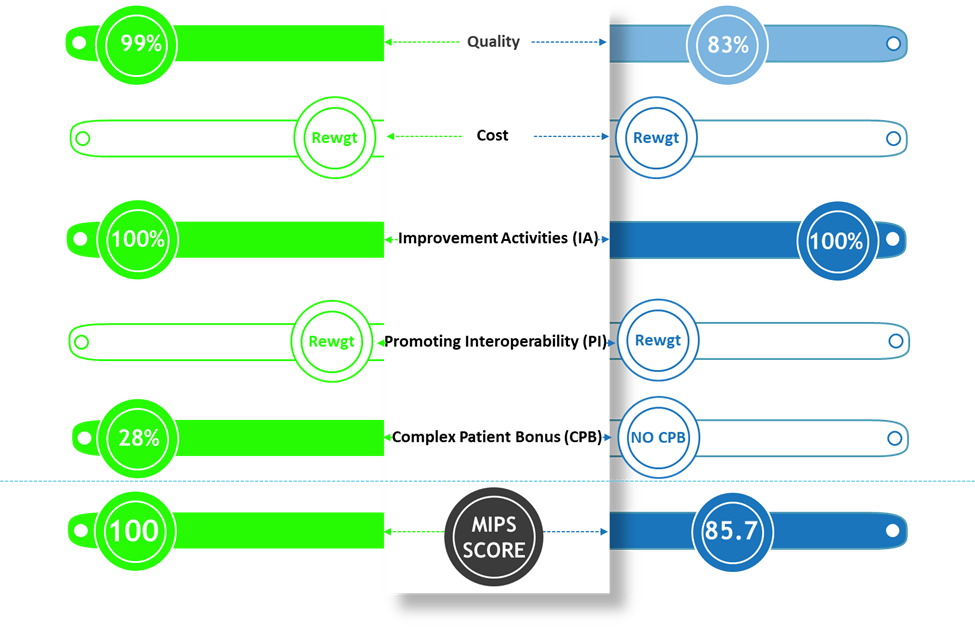By Molly Minehan

When the Quality Payment Program (QPP) kicked off in 2017, the plan included a phased-in approach to increased challenge in reporting and scoring until a point in which all MIPS eligible clinicians and practices were being held responsible for a higher degree of care through improved quality and reduced cost. The CMS “triple aim” was the goal after the QPP’s first few years of development but political backpedaling and a pandemic would move the plan forward one step only to fall back five. What wasn’t expected was the bold approach CMS would take in the 2022 QPP final rule, especially with regard to MIPS policies and participants.
For 2022, CMS finalized several policies that make this year quite a bit more challenging than prior reporting years.
The removal of these quality and complex patient bonus points was a surprise as this was a luxury, which MIPS participants had leaned on to close scoring gaps when performance was lacking.
These finalized policies will decrease MIPS quality scores by up to 20% and MIPS total scores between 10 to 20% or more. The figure below is a use case demonstrating the impact of these 2022 policies on a very high performing primary care practice:
You can see that even with the same performance on all quality measures, the 2022 finalized policies will reduce the MIPS score for this practice from a perfect 100 to an expected 85.7 points, a total drop of 14.3 points. Since the exceptional performance threshold is 89 for 2022, this practice is now falling below that score and would not reach exceptional performance for the first time since the beginning of the MIPS program.
So now the good news… MIPS participants that have sought to improve performance across the categories of EHR/PM technology interoperability, quality improvement activities, cost reduction, and quality performance will come out on top in 2022. Those that have worked with experts to understand how best to convey their quality care excellence through sound measure selection for optimal scoring may finally reap the rewards they have been working towards since the start of the program.
For 2022, CMS has set the performance threshold, that being the minimum MIPS score needed to avoid penalty, at 75 points, which is the highest it has been so far in the program. CMS also finalized that the exceptional performance bonus would be available for the last time in 2022, which was an extension from the original policy that it would only be paid out the first 5 years of the program. To reach the exceptional performance bonus, MIPS participants must reach a total MIPS score of 89 points. That number, without the inclusion of quality bonus points in the MIPS scores and with the elusive Cost category weighted at 30%, will certainly be a challenge to reach but will also be the reason why incentives could be much higher from 2022. The numbers are there to back up this possibility.
In prior years, the highest MIPS scores saturated the incentive pool so there was less to share because almost everyone had higher scores. For 2022, the prediction is that due to CMS finalized policies, it will prove far more difficult to reach the performance thresholds the masses have reached in prior years. As a result, there will be more incentive revenue being spread among those few MIPS participants who have stayed the course and prepared themselves for this performance year.
The one thing holding the MIPS program back from rewarding those who put the triple aim at the forefront of their mission is the lingering effects of the pandemic. Organizations are still struggling to get back to a pre-pandemic state so CMS finalized they will continue offering the ‘Extreme and Uncontrollable Circumstances’ (E&UC) hardship to any clinician or organization that cannot meet the reporting requirements under MIPS due to continued pandemic related strains. Unfortunately, this “get out of jail free” card, while necessary, will hold the program back and will result in continually disappointing payment adjustments.
Even though the hardship exception exists for 2022, there is no doubt that CMS is pushing to realign the MIPS program with the original phasing-in plan. As shown with the scoring use case described, removing the various bonus points will clearly compress MIPS scores significantly. One could even imagine a 2023 MIPS reporting year where a 75 point (or above) avoid penalty threshold actually results in enough penalty dollars to appropriately reward those organizations that have focused on the triple aim to offer better care and reduced cost for all patients.